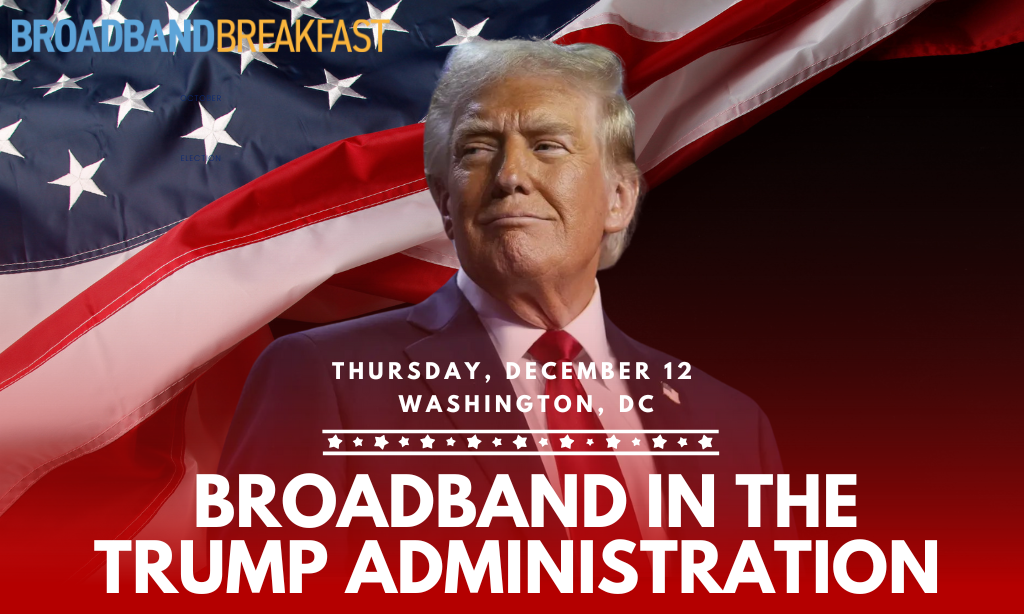State Leaders Push Back on BEAD Sustainability Concerns
State broadband officials advocated for a flexible, tech-neutral approach to serving the hardest-to-reach locations.
Jericho Casper

WASHINGTON, Dec. 12, 2024 – State broadband leaders pushed back Thursday against Federal Communications Commissioner Brendan Carr’s claim that a current $42.5 billion federal broadband expansion program’s design was “unsustainable.”
During a panel discussion at Broadband Breakfast’s Broadband in the Trump Administration event, officials from Michigan, Maryland, and New York defended the Broadband Equity, Access, and Deployment program’s viability and called for flexibility in using multiple technologies to close the digital divide.
“Congress in the Infrastructure Act gave us a ‘one-two punch’ of the [$42.45 billion] BEAD program and the [$2.75 billion] Digital Equity Act programs,” said Eric Frederick, chief connectivity officer of the Michigan High-Speed Internet Office. “We need to make sure that those programs are implemented concurrently.”
Frederick’s comments come as Republican opposition to Digital Equity Act measures intensifies, with Sen. Ted Cruz, R-Texas, threatening in November to halt the digital equity programs, claiming certain initiatives violate the Fifth Amendment.
Frederick, whose state office plans to open its BEAD application window on Jan. 9, stressed that sustainability depends not only on building infrastructure but also on fostering adoption. “We as states recognize the need of not just improving supply in the digital divide. We have to address demand,” he said. “If we’re not addressing those at the same time, these networks won’t be sustainable.”
A Call for Technology Neutrality
The state broadband leaders strongly advocated for a tech neutral approach to implementing the BEAD program, emphasizing the importance of leveraging multiple technologies to connect the hardest-to-reach areas.
“With the new administration, I think what's exciting is the opportunity for flexibility with technology,” said Ronnie Hammond, director of Maryland’s Office of Statewide Broadband.
Hammond expects BEAD funding go out quickly.
“Our remaining locations are our hardest to reach. [Flexibility will] offer opportunities to expand and reach those homes in a timely and effective manner. I think we’re going to see this administration focus on getting money out the door as fast as possible and getting projects on the ground,” Hammond said.
Some states will invest in satellite technology, if allowed.
“There are [locations] where the only way to get [high-speed Internet] there is vertically down from the sky,” said Joshua Breitbart, senior vice president of Connect All at Empire State Development in New York, pointing to the role satellite technology can play in regions like the Adirondacks, a mountainous and heavily wooded area in northeastern New York that spans over 6 million acres of protected land.
Frederick added that Michigan is embracing a mix of technologies. “We have to make room for all technology to make sure we can truly get to every one of our eligible locations,” he said. “It’s not about the technology — we can fight about bits and bytes, fiber and satellite, all we want — but it’s about people, and we want to connect these people as quickly as we possibly can.”
Diane Rinaldo, executive director of the Open RAN Policy Coalition and former acting head of NTIA, echoed the call for technological flexibility. “I think we should always be technology-neutral. It’s important to be as nimble as possible and to [benefit from] innovation to connect our citizens with the most up-to-date technology,” she said.
Rinaldo predicted that the Trump administration will likely shift the BEAD program’s prioritization from fiber to include emerging technologies like fixed wireless and satellite.
“The flexibility to look at emerging technologies is really exciting,” Frederick said. “We are focusing on long term, sustainable and resilient, scalable networks as we deploy BEAD, but we know that that solution is not going to be right for every single community that we go to.”
Whether through fiber, fixed wireless, satellite, or yet-to-be-developed technologies, the panelists made it clear that their ultimate priority is connecting people — not just infrastructure.
 Broadband BreakfastBroadband Breakfast
Broadband BreakfastBroadband Breakfast










Member discussion